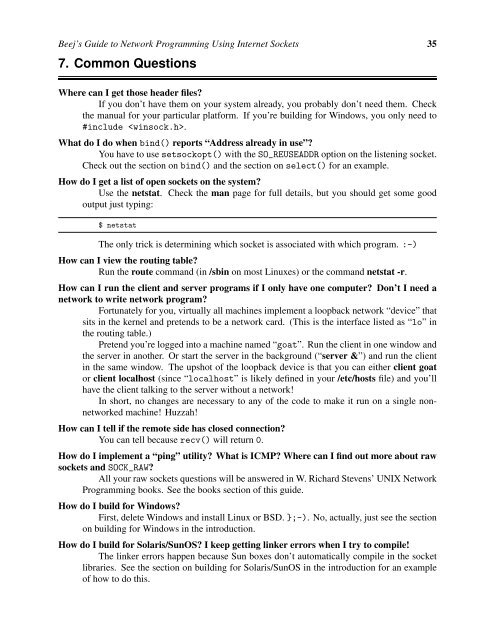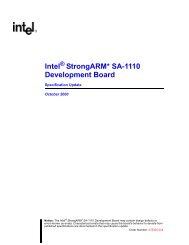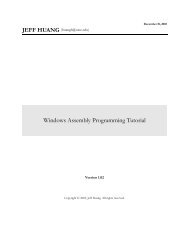Beej's Guide to Network Programming Using Internet Sockets
Beej's Guide to Network Programming Using Internet Sockets
Beej's Guide to Network Programming Using Internet Sockets
- No tags were found...
Create successful ePaper yourself
Turn your PDF publications into a flip-book with our unique Google optimized e-Paper software.
Beej’s <strong>Guide</strong> <strong>to</strong> <strong>Network</strong> <strong>Programming</strong> <strong>Using</strong> <strong>Internet</strong> <strong>Sockets</strong> 357. Common QuestionsWhere can I get those header files?If you don’t have them on your system already, you probably don’t need them. Checkthe manual for your particular platform. If you’re building for Windows, you only need <strong>to</strong>#include .What do I do when bind() reports “Address already in use”?You have <strong>to</strong> use setsockopt() with the SO_REUSEADDR option on the listening socket.Check out the section on bind() and the section on select() for an example.How do I get a list of open sockets on the system?Use the netstat. Check the man page for full details, but you should get some goodoutput just typing:$ netstatThe only trick is determining which socket is associated with which program. :-)How can I view the routing table?Run the route command (in /sbin on most Linuxes) or the command netstat -r.How can I run the client and server programs if I only have one computer? Don’t I need anetwork <strong>to</strong> write network program?Fortunately for you, virtually all machines implement a loopback network “device” thatsits in the kernel and pretends <strong>to</strong> be a network card. (This is the interface listed as “lo” inthe routing table.)Pretend you’re logged in<strong>to</strong> a machine named “goat”. Run the client in one window andthe server in another. Or start the server in the background (“server &”) and run the clientin the same window. The upshot of the loopback device is that you can either client goa<strong>to</strong>r client localhost (since “localhost” is likely defined in your /etc/hosts file) and you’llhave the client talking <strong>to</strong> the server without a network!In short, no changes are necessary <strong>to</strong> any of the code <strong>to</strong> make it run on a single nonnetworkedmachine! Huzzah!How can I tell if the remote side has closed connection?You can tell because recv() will return 0.How do I implement a “ping” utility? What is ICMP? Where can I find out more about rawsockets and SOCK_RAW?All your raw sockets questions will be answered in W. Richard Stevens’ UNIX <strong>Network</strong><strong>Programming</strong> books. See the books section of this guide.How do I build for Windows?First, delete Windows and install Linux or BSD. };-). No, actually, just see the sectionon building for Windows in the introduction.How do I build for Solaris/SunOS? I keep getting linker errors when I try <strong>to</strong> compile!The linker errors happen because Sun boxes don’t au<strong>to</strong>matically compile in the socketlibraries. See the section on building for Solaris/SunOS in the introduction for an exampleof how <strong>to</strong> do this.












